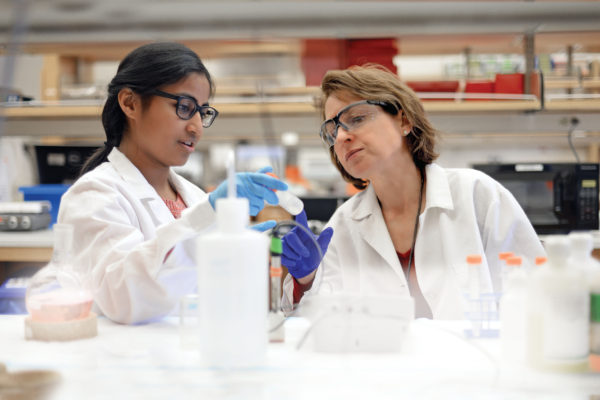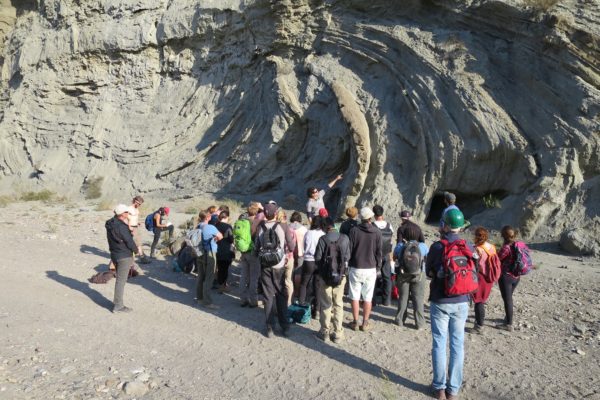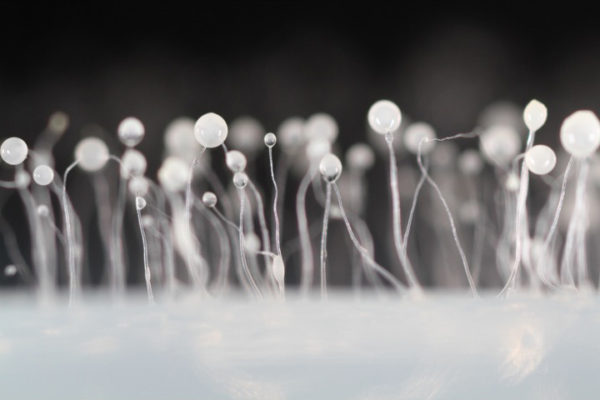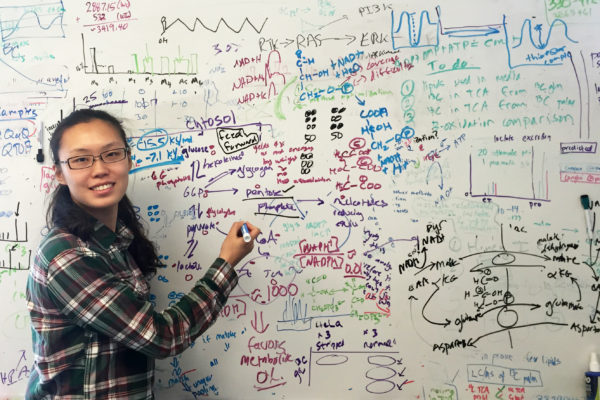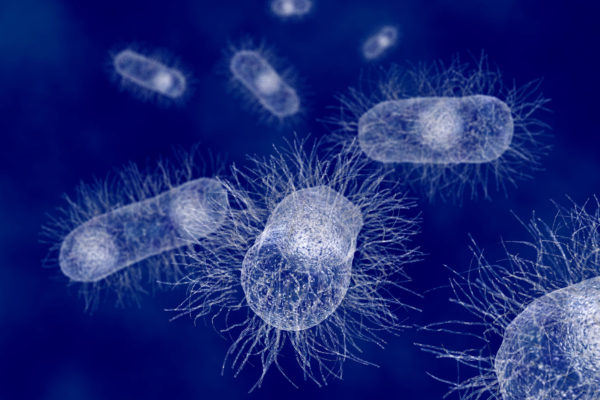Back to health
Biomedical engineer Lori Setton’s collaborative research is pioneering new ways of providing relief to those who suffer neck and back pain.
Nanoparticles present sustainable way to grow food crops
Engineers at Washington University in St. Louis are using nanoparticle technology in an effort to meet the ever-increasing demand for food. Their innovative technique boosts the growth of a protein-rich bean by improving the way it absorbs nutrients, while reducing the need for fertilizer.
Multicultural geology
This spring, theory-heavy Washington University in St. Louis geology students went on a field trip to southeastern Spain with field-trained students from Trinity College, Dublin. What they learned from each other transcended earth — and time.
Why is radioactive iron raining down on us?
Most of the galactic cosmic rays reaching Earth come from nearby clusters of massive stars, according to new observations from NASA’s ACE spacecraft. The distance between the cosmic rays’ point of origin and Earth is limited by the survival of a radioactive isotope of iron, Fe-60, which has a half life of 2.6 million years. These tiny clocks indicate there was a source within spitting distance of Earth within the past few million years.
Farming amoebae carry around detoxifying food
The social amoeba Dictyostelium discoideum can farm symbiotic bacteria for food by carrying them from generation to generation. New research shows that these bacteria can also protect the amoeba from environmental toxins.
Climate change: Are we there yet?
The six Washington University students who went to the Conference of the Parties (COP21) climate negotiations in Paris are well prepared, resilient, tough-minded and in this fight for the duration.
Trap and neutralize: A new way to clean contaminated groundwater
A team of researchers from Washington University in St. Louis have helped discover a new chemical method to immobilize uranium in contaminated groundwater, which could lead to more precise and successful water remediation efforts at former nuclear sites.
Why don’t plants grow upside down?
We take so many things for granted. Why do trees grow only so tall and no taller? Why do some potatoes have those mysterious brown holes in them? And why do plants grow right-side up instead of upside-down? Eric Hamilton, PhD ’16, explores the question.
Challenging an old idea
For more than 80 years, scientists have thought that cancer cells fuel their explosive growth by soaking up glucose from the blood, using its energy and atoms to crank out duplicate sets of cellular components. But is this really true? Work in a metabolomics laboratory at Washington University in St. Louis suggests not.
Survival of the hardest-working
An engineering team at Washington University in St. Louis developed a cellular kill switch, a sensor that rewards hard working cells and eliminates their lazy counterparts. The high-tech engineering fix could help improve production of biofuels and pharmaceuticals.
Older Stories
